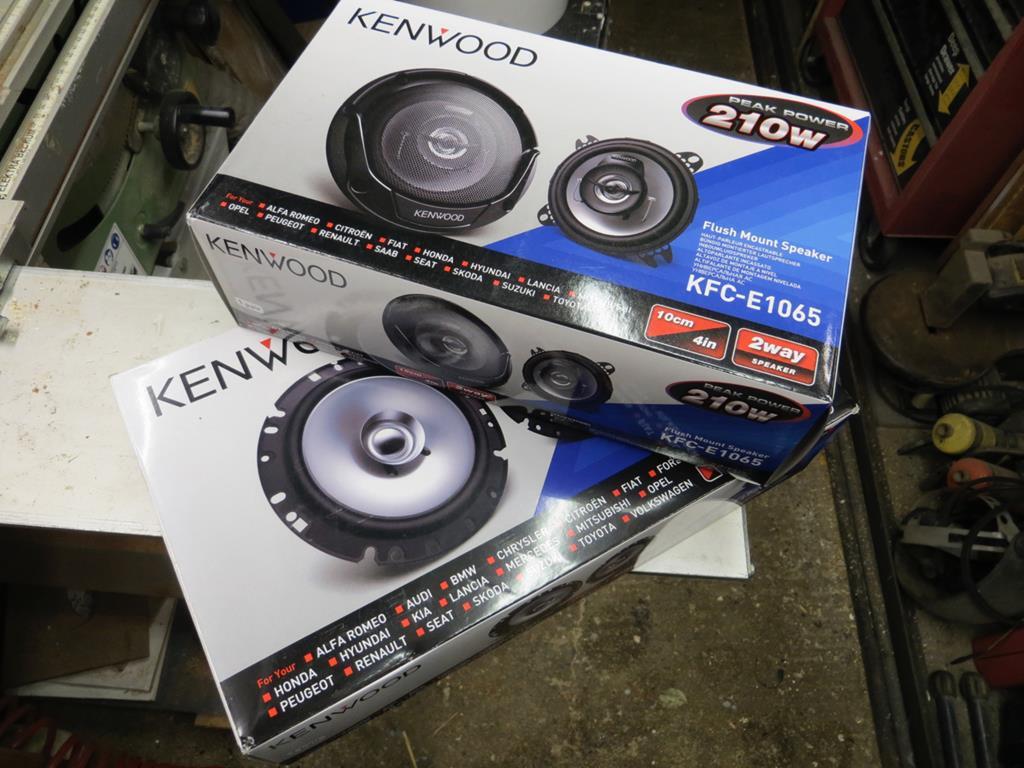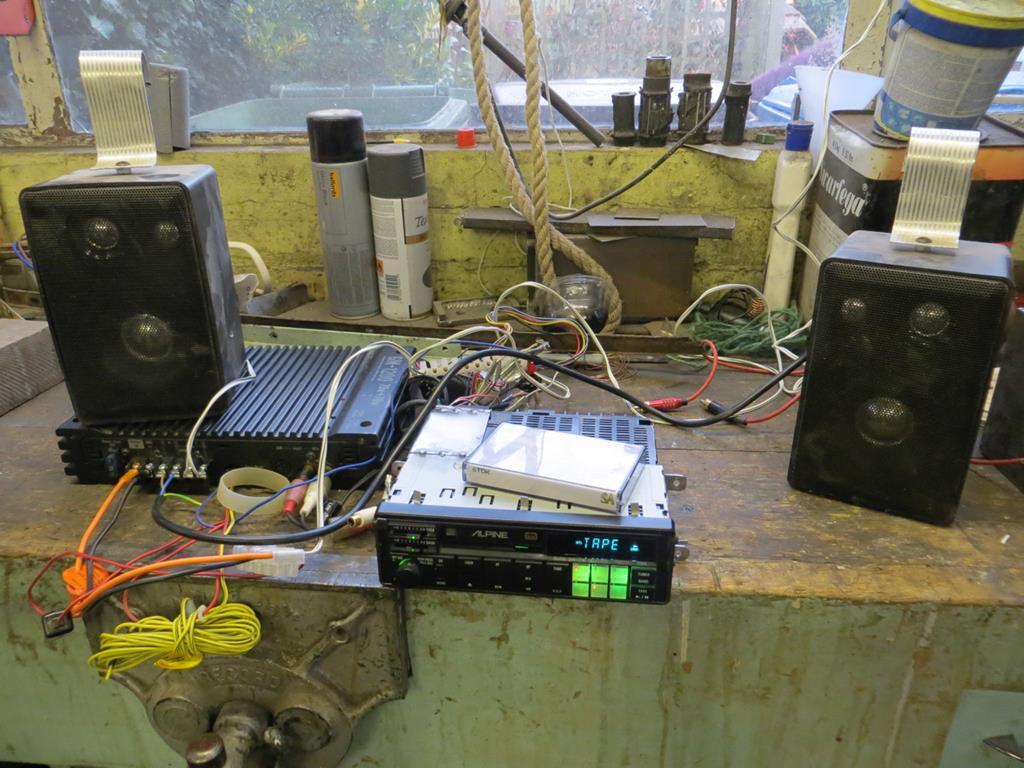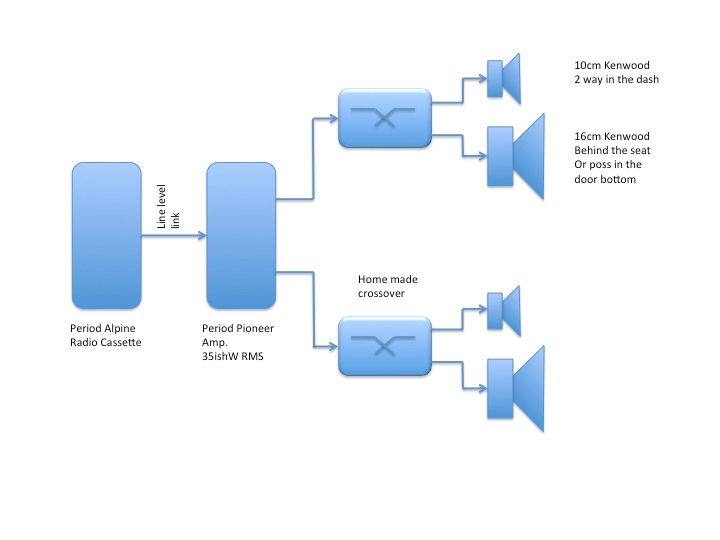So, before I measure the car speakers I need to prove that I can measure some proper speakers.
Here's the plan. Audacity (free audio editing software) is capable of creating tones at a particular frequency or a frequency sweep. So I'll create some tones and sweeps which I can play off the laptop, through my hifi and through a selection of speakers.
I'll then use a microphone and mic amp to record the speaker into Audacity. Lastly I can use Audacity to create a frequency spectrum of the recording which I should be able to use to see what's going on.
There are a few problems with this approach. One is the background noise of the room which you'll also record. That's what messed things up the first time round. The sound I was trying to see was too quiet to be obvious above the noise.
A real big problem is the frequency response of the mic. What are you measuring exactly? The speaker or the mic? Well both. And you're also measuring the room acoustics. So how can I separate all these effects? Well I can't. So I can't make 'meaningful' conclusions about my speakers but but I might just be able to see when they start to roll off. So lets play anyway.
Here's the test rig…
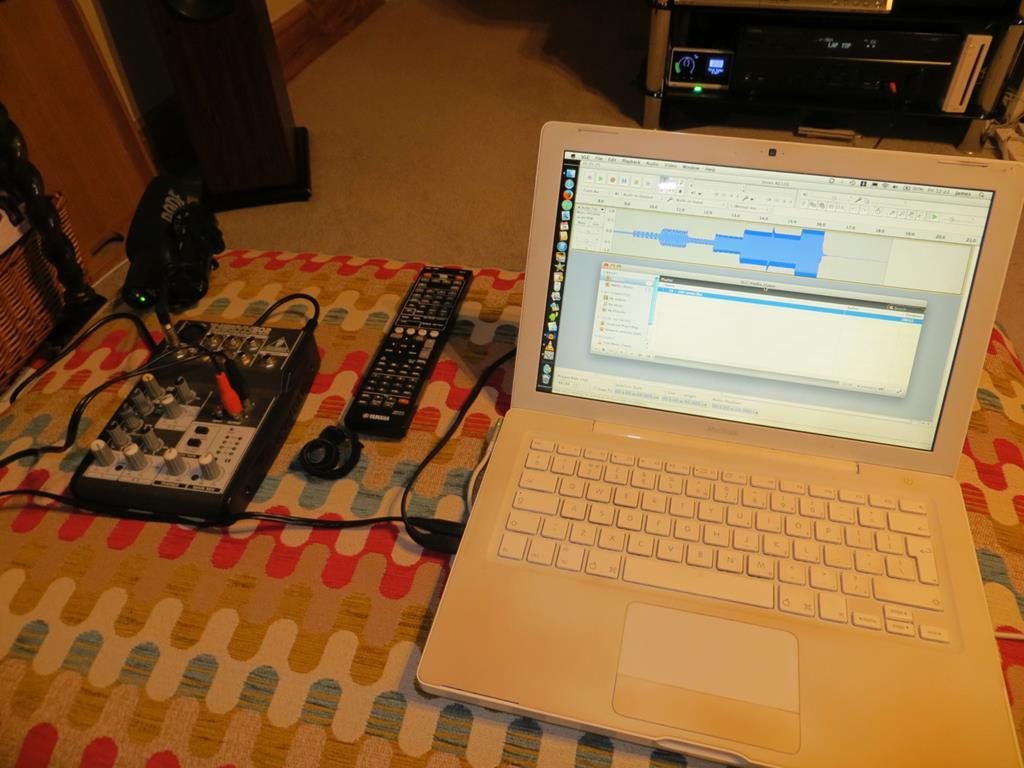
My very old laptop and an old Behringer mixer which is used as a mic amp.
And a mic.
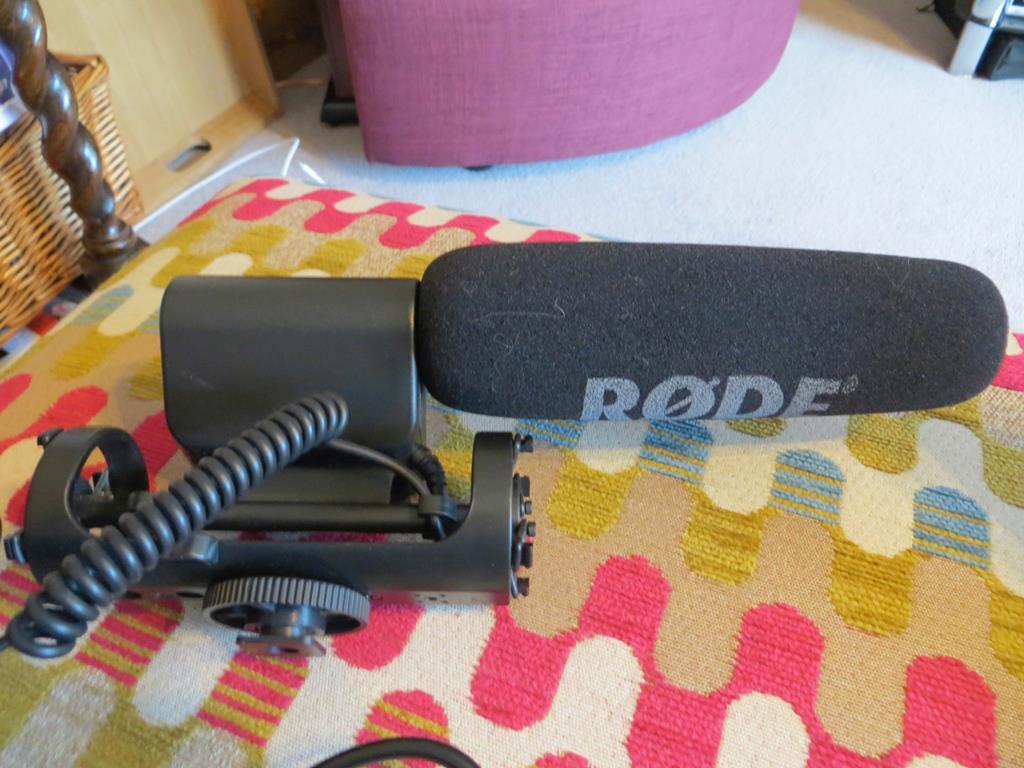
It's a Rode thing intended to sit on a DSLR when you are using it for video. It's the most expensive mic I can lay my hands on easily but that doesn't make it the best thing since sliced bread. It has a claimed frequency response down to 40Hz. But again, they don't say how far down it is at 40Hz.
I made a test tone sequence. It starts with a burst of 1KHz. Then silence followed by 10Hz, 20Hz, 30Hz and so on to 100Hz. The 1KHz burst is there for two reasons. First so I can time align the traces if I want to. Second, and most important, is that it's my reference level to measure the other frequencies against.
Here's the first speaker to play with.
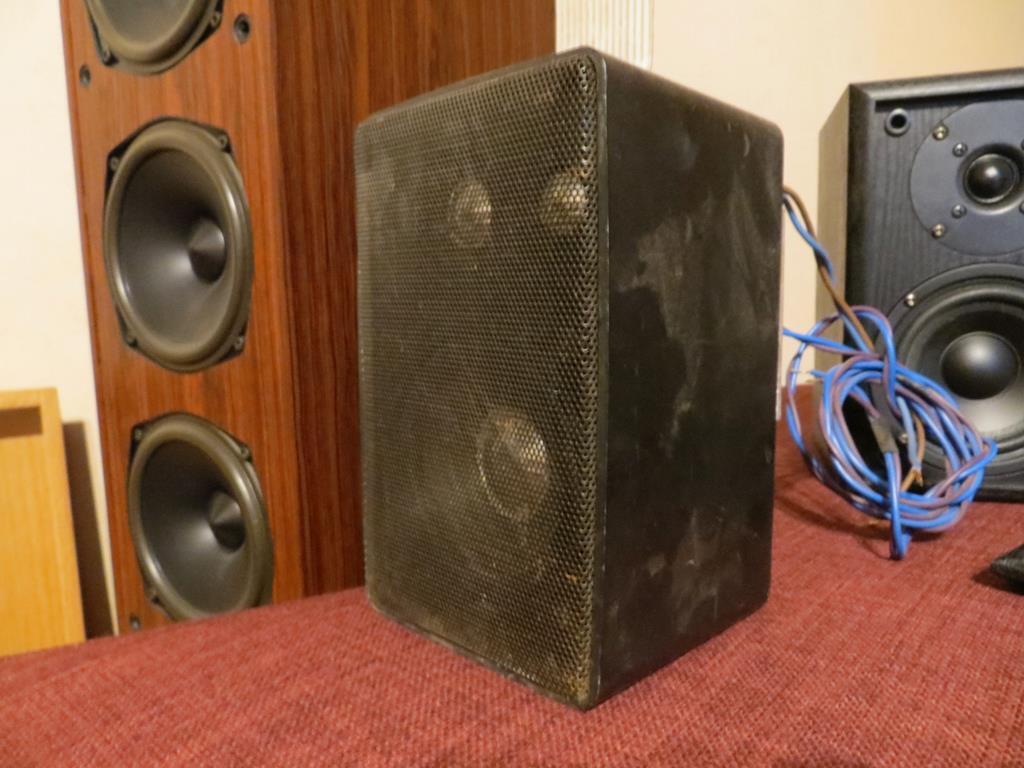
This is one of a pair that lives in the garage. I actually built a home made power amp into these so I could plug my phone into them when I was outside.
They are (and sound) rubbish. One fell off the scaffold tower last year which didn't help it any.
Here's the picture of the recording with some annotation.
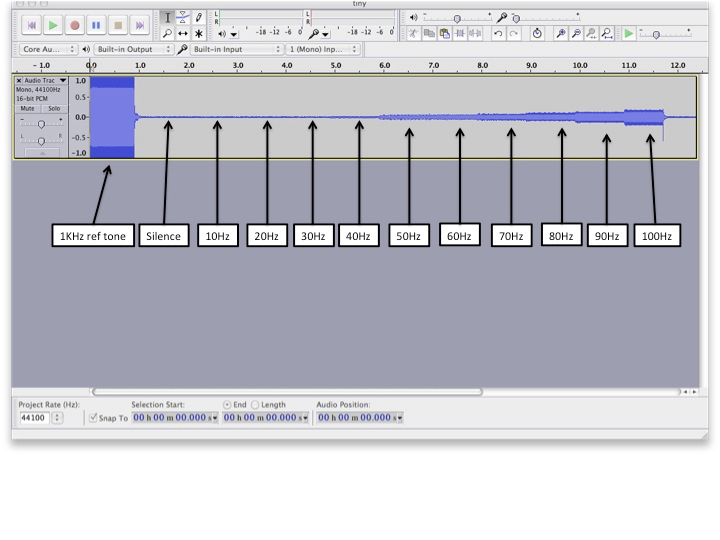
First thing that's really obvious is that there is sod all below 50Hz. Also look how much quieter it is at 100Hz than at 1KHz. Any wonder they sound a bit bass light.
Let's look at the spectrum.
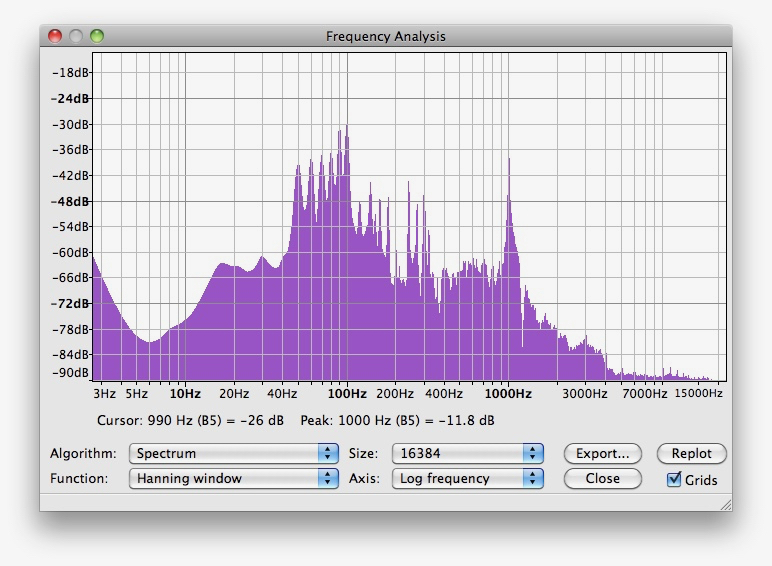
A lot of what you see here is noise - the noise that caused me bother the first time I tried this. The interesting bits are the peaks at 1KHZ, 100Hz, 90Hz, and so on. The peak at 1KHz looks lower than it is. It's so narrow that it doesn't show up well. I've stuck a cursor on it and it's at about -12dB. At 100Hz it's nearly 20dB lower. That's a lot! And at 50Hz it's another 6dB down. And at 40Hz it's completely gone.
Something a little better…
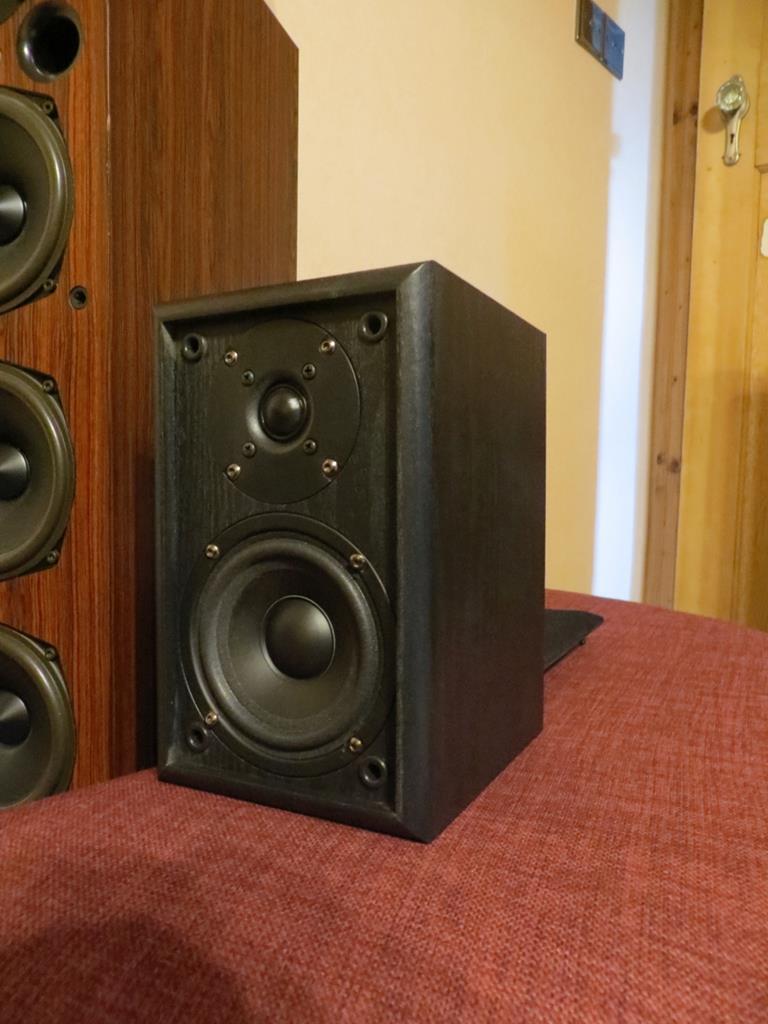
This little speaker is branded as Acoustic Solutions. They were cheap little things from Argos I think. But they are not too bad to be honest. I use them as the centre and rear surround speakers in the living room. As part of that rig they are fine. I have another set on top of the cupboards in the kitchen. There, on their own, not so brilliant. But the kitchen isn't exactly an outstanding listening environment.
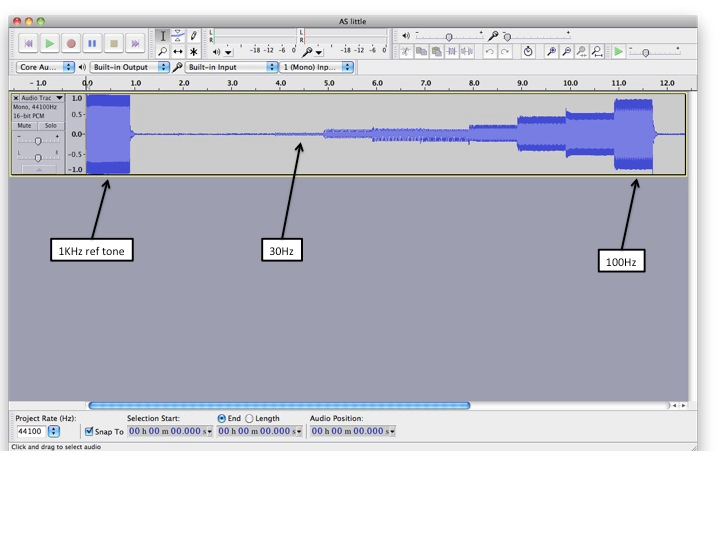
First thing is that I've now got a little wiggle at 30Hz showing up. It's very low but it's there. The other thing is that the 100Hz tone is almost as loud as the 1KHz tone. To put that another way, these should have significantly more bass than the last ones.
Guess what, when you listen to them they have significantly more bass than the last ones.
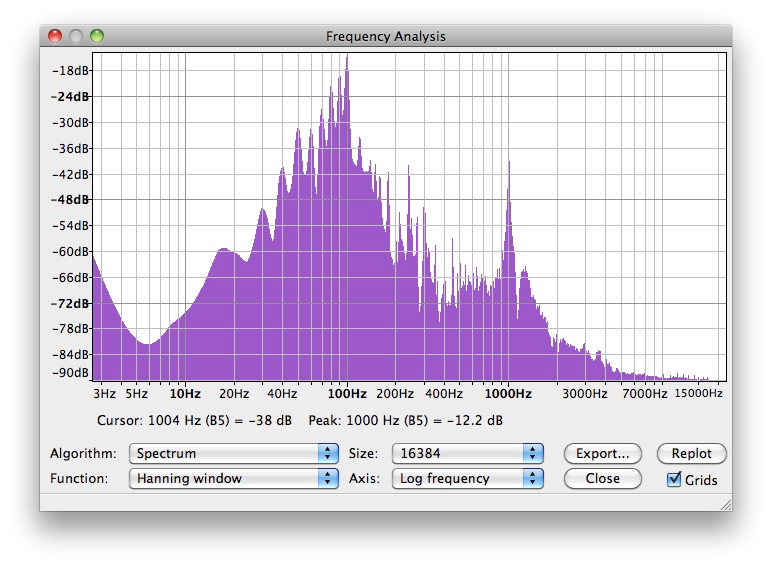
Again the 1KHz peak looks very low, but it's not, it's just thin and not showing up. Again I've hovered the cursor on it and it's showing as -12dB.
The 100Hz peak is at -15dB so only 3dB down. Yee Ha! There is a noticeable peak at 30Hz. It's miles down, 38dB, but it's showing up. Remember we really don't know what effect the mic is having on this. But we can say that these speakers are much better than the last ones.
See the peak just below 20Hz? That's not 20Hz. I think it's room noise at about 18Hz. I also took a spectrum of silence and it's on that too. Although somewhat lower in level.
How about these then? (Grotty picture, sorry.)
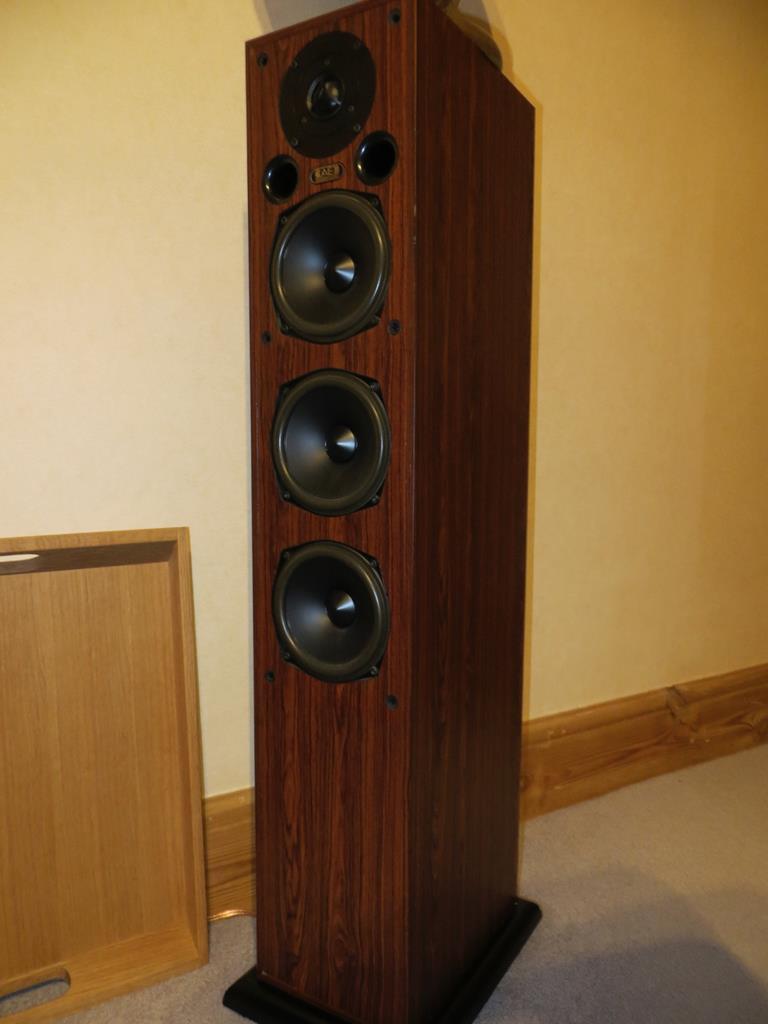
These are my proper speakers. Used as the front left and right surround and for stereo listening. They are mid range Acoustic Energy AE120s.
They aren't outstandingly special or anything. But they are neutral sounding and easy to listen to. This is good because we watch the TV through these and 'coloured' sounding speakers are tiring to listen to for long periods. Stick the opening sequence of 'Saving Private Ryan' on the TV, give it some welly, and they are quite capable of making you flinch!
When I bought these I was actually after a set of 'transmission line' speakers but they sounded wooly to me. The chap in the shop asked if I could afford a bit more, I said that I was more interested in what they sounded like, I went home with the AEs. We've been happy together ever since.
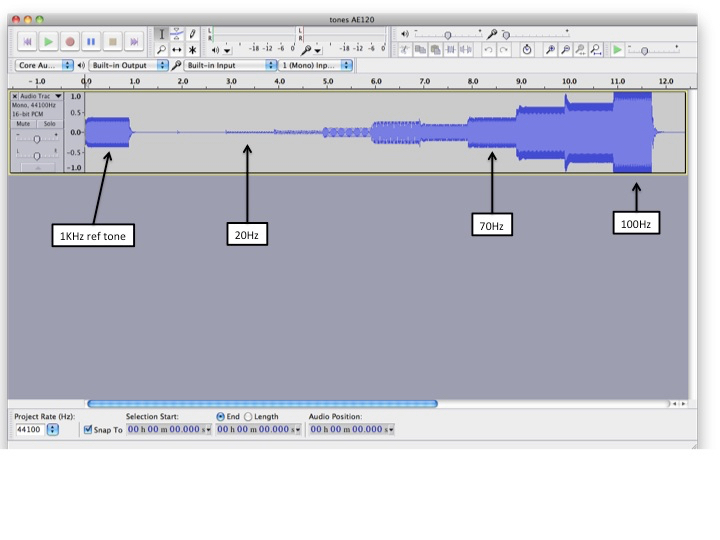
Well now. That's different. First of all there is a wiggle at 20Hz, the first time we've seen that. Secondly 100Hz is actually louder than my 1KHz reference level! It's back flat again at around 70Hz. Again, we don't know what effect the mic is having on all this but I'm not surprised that it's high at 100Hz. I'll explain in a moment.
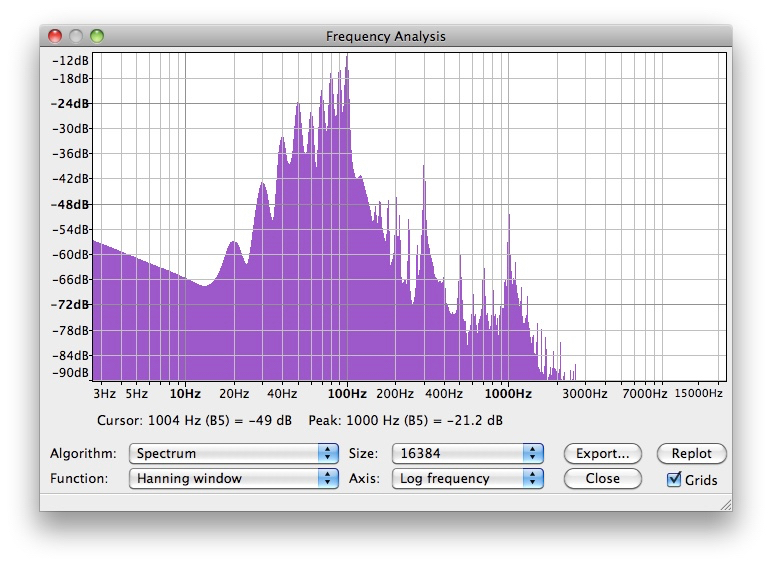
So, my 1KHz reference is at about -20dB. The 100Hz peak is about 10dB too loud. They do occasionally sound a bit boomy. I think what's happening here is that they have enough grunt to set off a resonance in the room. According to the interweb 100Hz has a wavelength of about 3.5 meters. which is almost exactly how wide my living room is. What's more my room is about 6.5 meters long with a solid wall at one end and a big patio door at the other. So one wavelength wide by two wavelengths long. If the room doesn't have a resonance at 100Hz it'd be surprising.
Another slight annoyance about the AEs is that the bass port is in the back so they are a bit susceptible to being too close to walls where the sound from the port bounces back into the room.
Anyhoo, we now have a proper peak at 20Hz now. It's 35dB below 1KHz but I don't know how much of that is the mic. If you are wondering about 10Hz. Well I couldn't hear that. But the speakers were trying. You could see the drivers flapping in and out - poor things!
So what's all this mean? Well it's not scientific but I should get a feel of what the dash speakers can do. And that means I can set the crossover somewhere sensible. The problem is… I need a cabinet, or at least a baffle to mount the Kenwoods in so I can measure them.
Ill get back to you…
James








